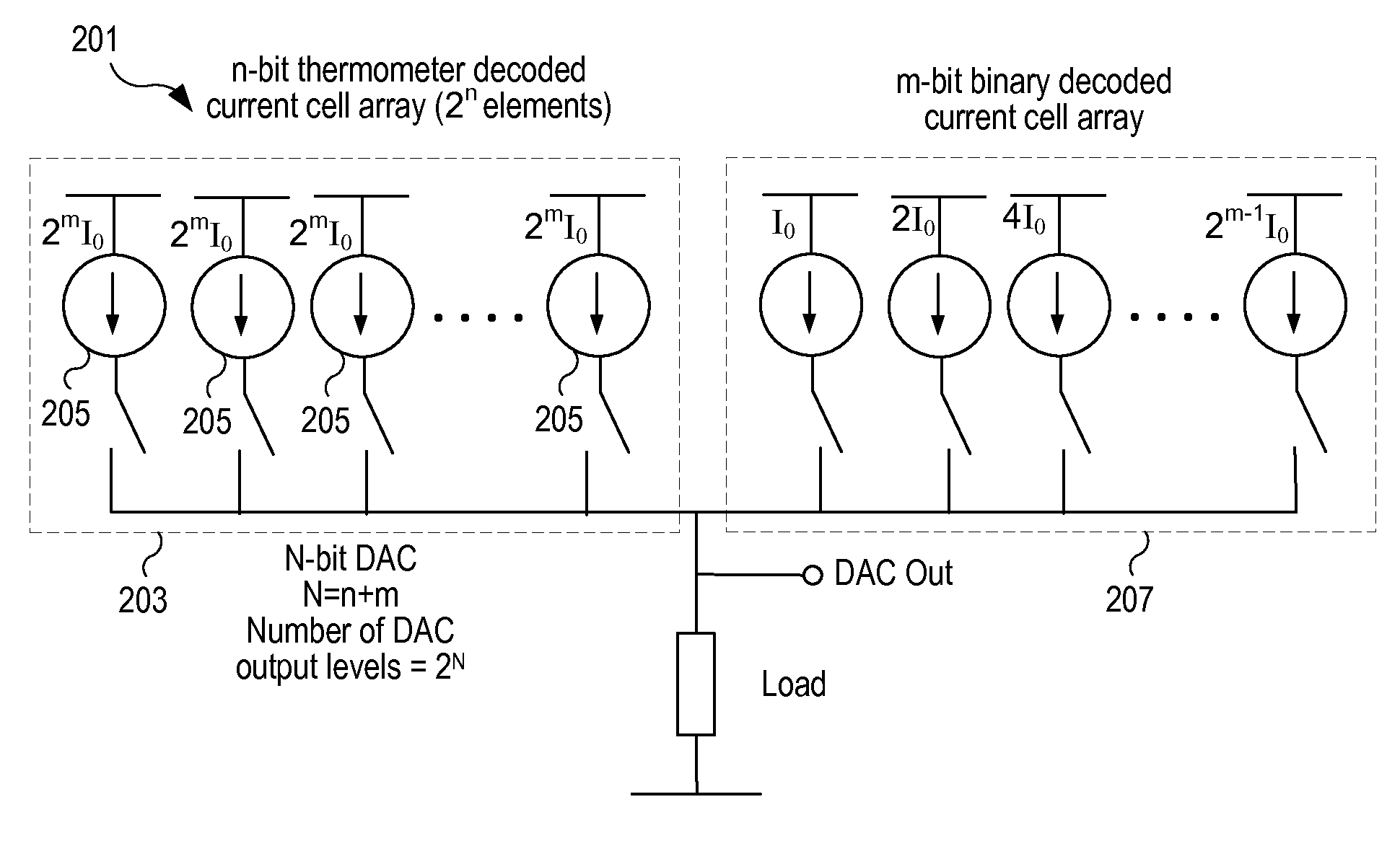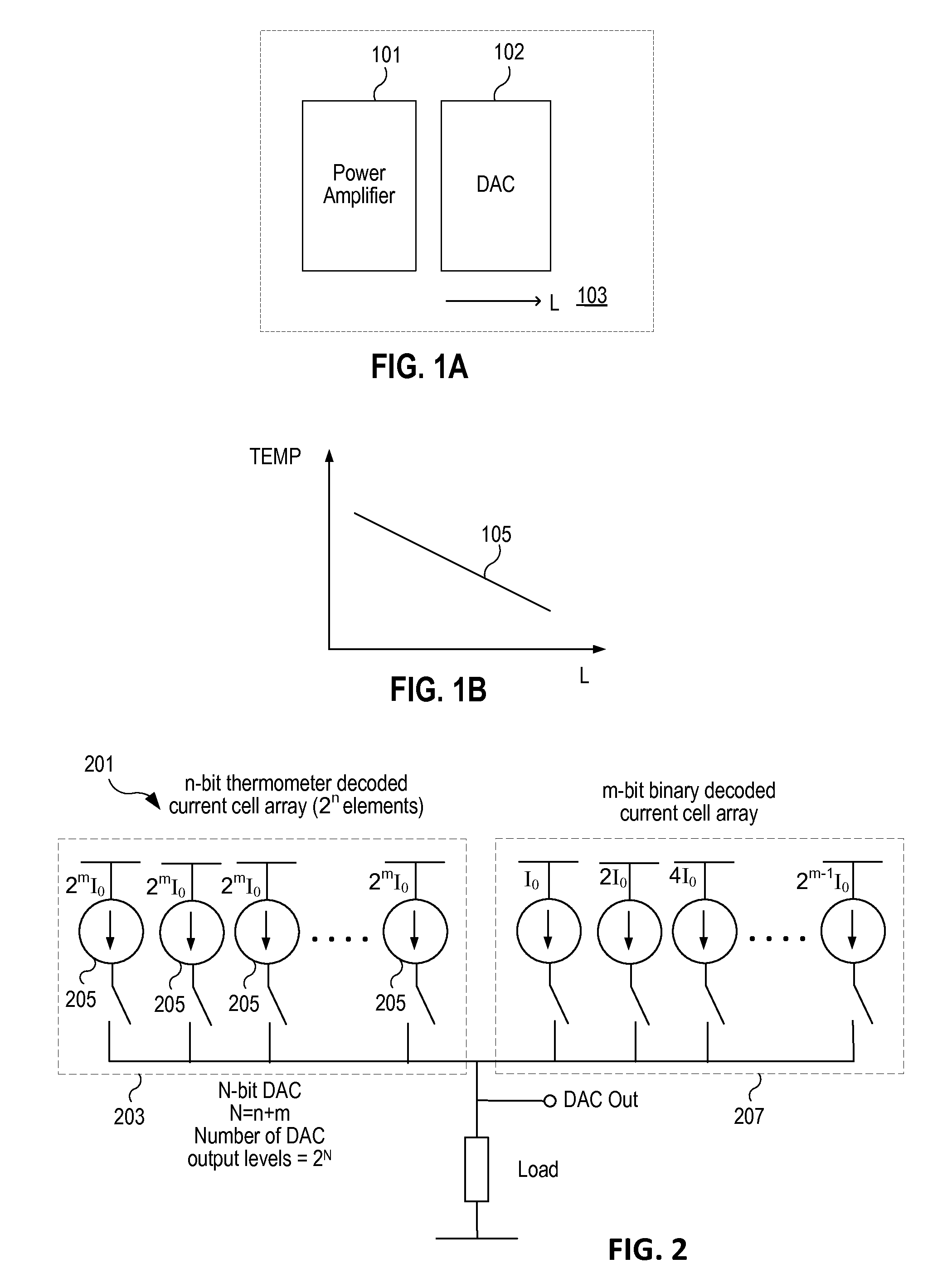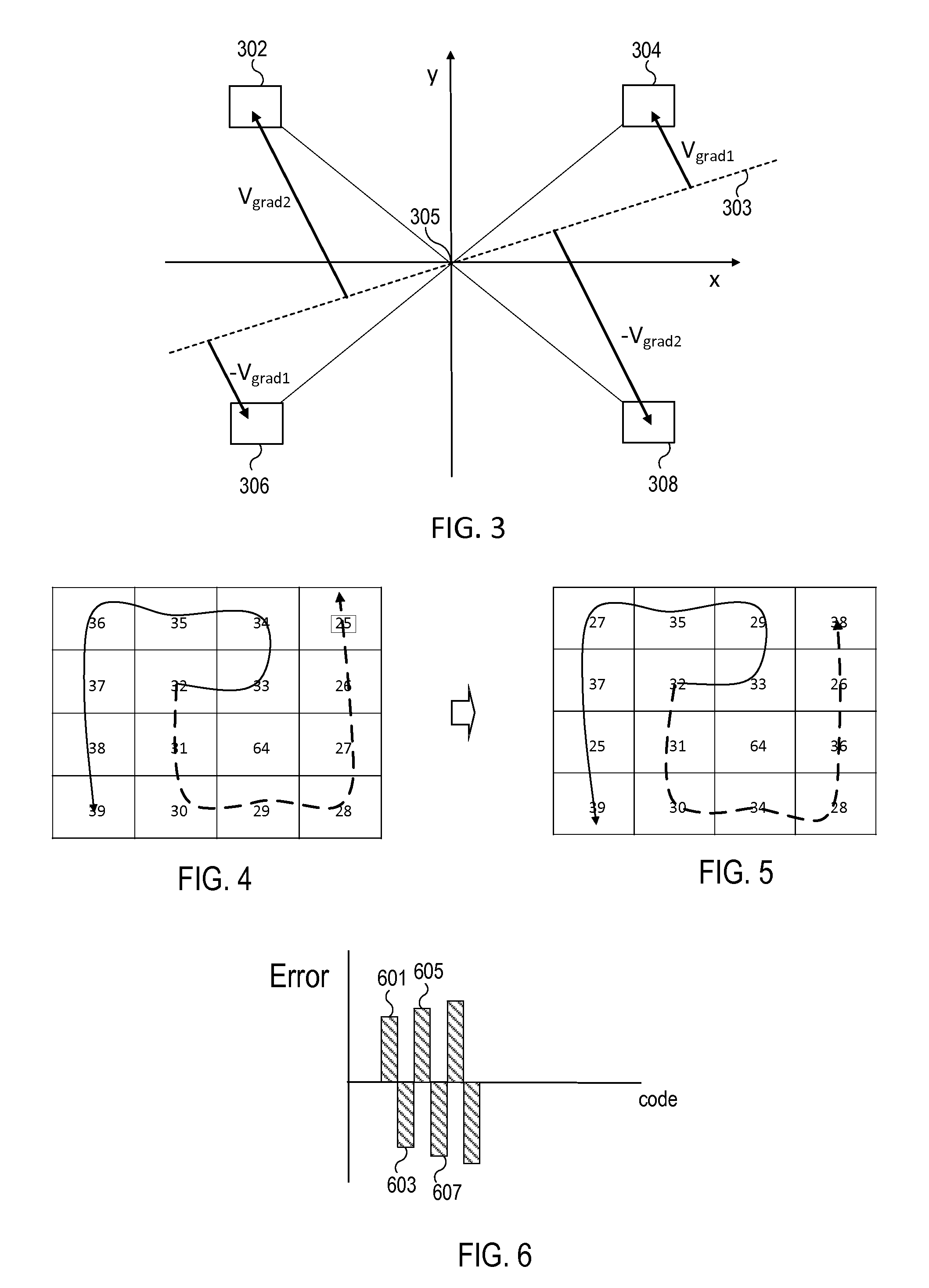Dac current source matrix patterns with gradient error cancellation
a current source and gradient error technology, applied in the field of digital to analog converters, can solve the problems of affecting the accuracy of the dac, requiring additional space, and typically complex circuitry for calibration, and achieve the effect of reducing the first order gradient
- Summary
- Abstract
- Description
- Claims
- Application Information
AI Technical Summary
Benefits of technology
Problems solved by technology
Method used
Image
Examples
Embodiment Construction
[0006]In an embodiment, first order gradient errors are canceled with no current source splitting. Consecutive current sources are placed symmetrically around the center of the array such that consecutive elements cancel the accumulated mismatch. The element placement may also follow a constraint that the consecutive elements that correspond to small input amplitudes (mid-scale codes) make a smaller spatial jump than those correspond to larger signal amplitudes.
[0007]In an embodiment a digital-to-analog converter (DAC) includes an array of current elements configured to supply current using thermometer decoding of a code corresponding to at least a portion of a digital signal to be converted. For a majority of current elements in the array, pairs of consecutive current elements of the array are placed substantially symmetrically around a center location in the array, such that for each of the pairs, a first and second current element are offset from the center of the array in a subs...
PUM
 Login to View More
Login to View More Abstract
Description
Claims
Application Information
 Login to View More
Login to View More - R&D
- Intellectual Property
- Life Sciences
- Materials
- Tech Scout
- Unparalleled Data Quality
- Higher Quality Content
- 60% Fewer Hallucinations
Browse by: Latest US Patents, China's latest patents, Technical Efficacy Thesaurus, Application Domain, Technology Topic, Popular Technical Reports.
© 2025 PatSnap. All rights reserved.Legal|Privacy policy|Modern Slavery Act Transparency Statement|Sitemap|About US| Contact US: help@patsnap.com



